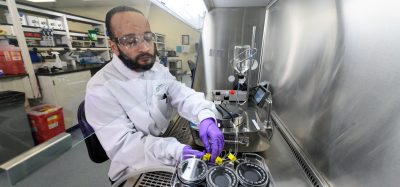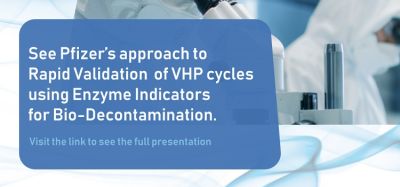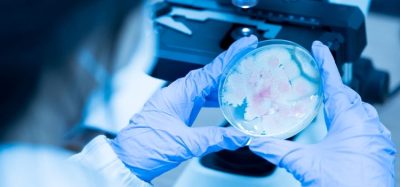The current market and future trends for RMM
Posted: 28 September 2006 | | No comments yet
Following on from our latest report in Issue 4 in which we outlined independent views on ‘solutions for the next stage’ in Rapid Microbiological Methods (RMM) from some of the industry’s leading names, Tony Cundell follows up with his own thoughts on this exciting field.
Following on from our latest report in Issue 4 in which we outlined independent views on ‘solutions for the next stage’ in Rapid Microbiological Methods (RMM) from some of the industry’s leading names, Tony Cundell follows up with his own thoughts on this exciting field.
Following on from our latest report in Issue 4 in which we outlined independent views on ‘solutions for the next stage’ in Rapid Microbiological Methods (RMM) from some of the industry’s leading names, Tony Cundell follows up with his own thoughts on this exciting field.
What technologies are currently available?
A wide range of technologies are available from multiple instrument suppliers that have recognisable advantages and disadvantages, but no method with universal application. The original four classifications of RMM outlined in the PDA Technical Report No. 33. The Evaluation, Validation, and implementation of new Microbiological Testing Methods. PDA J. Pharm. Sci. & Technol. 54 Supplement May-June, 2000, although artificial, still holds up. This includes growth-based technologies, where the measurement of biochemical or physiological parameters other than turbidity or colony formation reflects the growth of microorganisms. Examples are ATP bioluminescence, impedance, colorimetric detection of CO2 production, measurement of head-space pressure, biochemical assays and advanced imaging of micro-colonies. The second classification is viability-based technologies where the technology does not require the growth of the microorganisms for detection. Examples include epifluorescence microscopy and solid phase and flow fluorescence cytometry. The third classification is cellular component or artifact-based technologies that look to specific cellular components within a cell for microbial detection or identification. Examples include MALDi-TOF mass spectrometry, fatty acid methyl ester fingerprinting, ELISA, fluorescent probe detection, and bacterial endotoxin assay. The last classification is nucleic acid-based technologies where nucleic acids are amplified and detected. Examples include DNA hybridisation, DNA probes, ribotyping, polymerase chain reaction (PCR) and base sequencing.
What are the best applications for these technologies in pharmaceutical microbiology, e.g. Bioburden testing, sterility testing, environmental monitoring, water testing, microbial identification, etc?
As a microbiologist working in a big pharma company, I would be reluctant to endorse specific suppliers. Considerations include accuracy, sensitivity, precision, and linearity of response, ease of validation, reputation of the supplier, prior regulatory approval, and cost. The following technologies have received regulatory approval. The Celsis RapiScreen and the PallChek, both employing ATP bioluminescence, have been successfully used for the screening of non-sterile pharmaceutical and OTC drug products for an absence of a bioburden, the BacT/ALERT System has been used for sterility testing cell-derived transplantable products while the ScanRDI has been used for water monitoring and biofermenter sterility testing. You need to consider whether the equipment is being used for in-process monitoring where the result may be needed to move on to the next processing step or for finished product release where the microbial testing time is only one part of the product release cycle time.
What issues need to be considered in terms of validation?
The most important RMM validation issue is equivalence to the current method. Other standard validation issues include accuracy, sensitivity, precision and linearity of response. Microbiologist should use supplier-generated validation protocols whenever possible. Installation Qualification (IQ) is best timed with the delivery of the equipment to your laboratory. Operation Qualification (OQ) will demonstrate the functionality of the equipment while Performance Qualification (PQ) will be directly related to your application and products. Remember it is acceptable to include supplier-generated reports and publication from peer-reviewed journals within your validation report so you may avoid repeating the generation of pre-existing data. Validation protocols and reports must include the validation rationale, acceptance criteria, and deviations from protocol or acceptance criteria and the documents must be reviewed and approved by your Quality Unit.
How do you go about implementing new technologies?
You need to be familiar with the choices of RMM available to you.
I recommend using a decision matrix as I outlined in my article Opportunities for Rapid Microbial Methods in European Pharmaceutical Review Issue 1, 2006, to assist with the evaluation. This type of tool may be more flexible than the formal User Function Requirements favored in Process Validation.
When you have identified candidate methods I would recommend conducting a proof of concept study, preferably in your laboratory, that addresses the application that you are most interested in.
The next step is achieving managerial approval for the project. Remember that your counterparts in product release, planning and manufacturing, as well as upper management think in terms of time and money. Emphasise avoiding product rejection and reducing the product release cycle times to reduce inventories and avoid back orders.
Since the assay development and validation will require a sustained effort over a number of months, you will need to identify experienced microbiologists who can work on the project full time.
What is your strategy in terms of regulatory approval?
What are the greatest regulatory hurdles associated with the implementation of RMM technologies?
With the FDA three avenues are possible. NDA submission for a RMM used with a new product and a NDA supplement for existing product, filing a comparability protocol, or using the PAT Initiative. I understand that the FDA prefers the comparability protocol approach. It is advisable to discuss the application and validation strategy with the regulatory agency in advance.
How can you select the appropriate technology that will add the greatest value?
This is both a technical and a business decision. There are critical in-processing steps such as biofermenter sterility where the cost-of-materials is huge, off- setting the capital equipment and testing costs. In many cases although the incubation times for traditional microbial tests are protracted they are well within the product release cycle time. The batch record review, chemical testing, lot inspection and packaging may be beyond the incubation times. Pharmaceutical companies maintain large safety stocks of branded drug products and because of their profit margins are relatively insensitive to large WIP and finished goods inventories. However, OTC drug manufacturers are more receptive to the implementation of RMMs because of their volumes, supermarket and drug store stocking demands and lower profit margins.
How do you justify the cost and time required to select, procure and implement the new technologies?
Work with your accounting department to determine the Return on Investment (ROI). Seek out champions in manufacturing, marketing and materials management.
What RMM technologies have been successfully implemented in your company?
Part of my former company, Wyeth Healthcare in the UK, was a pioneer in the implementation of ATP bioluminescence for screening OTC drug products for absence of a bioburden.
What is the global status of RMM technologies, comparing the US with Europe and the rest of the world?
I suspect that our European counterparts are ahead of the US but it is hard to judge. Since regulatory agencies cannot publicise their RMM approvals and instrument companies are bound by non-disclosure agreements, it is up to individual pharmaceutical companies to announce their RMM implementation. You can monitor published articles and industry presentation to determine the status of RMM technologies.
How do you anticipate the field of RMM evolving in the next five years?
I am optimistic that RMMs are at the tipping point in terms of more rapid implementation. Two drivers in the pharmaceutical industry appear to be the Lean Manufacturing and the PAT Initiatives. Companies appear to be actively promoting RMM programs within the framework of these programs so I suspect we will see 2-3 significant RMM approvals each year.








